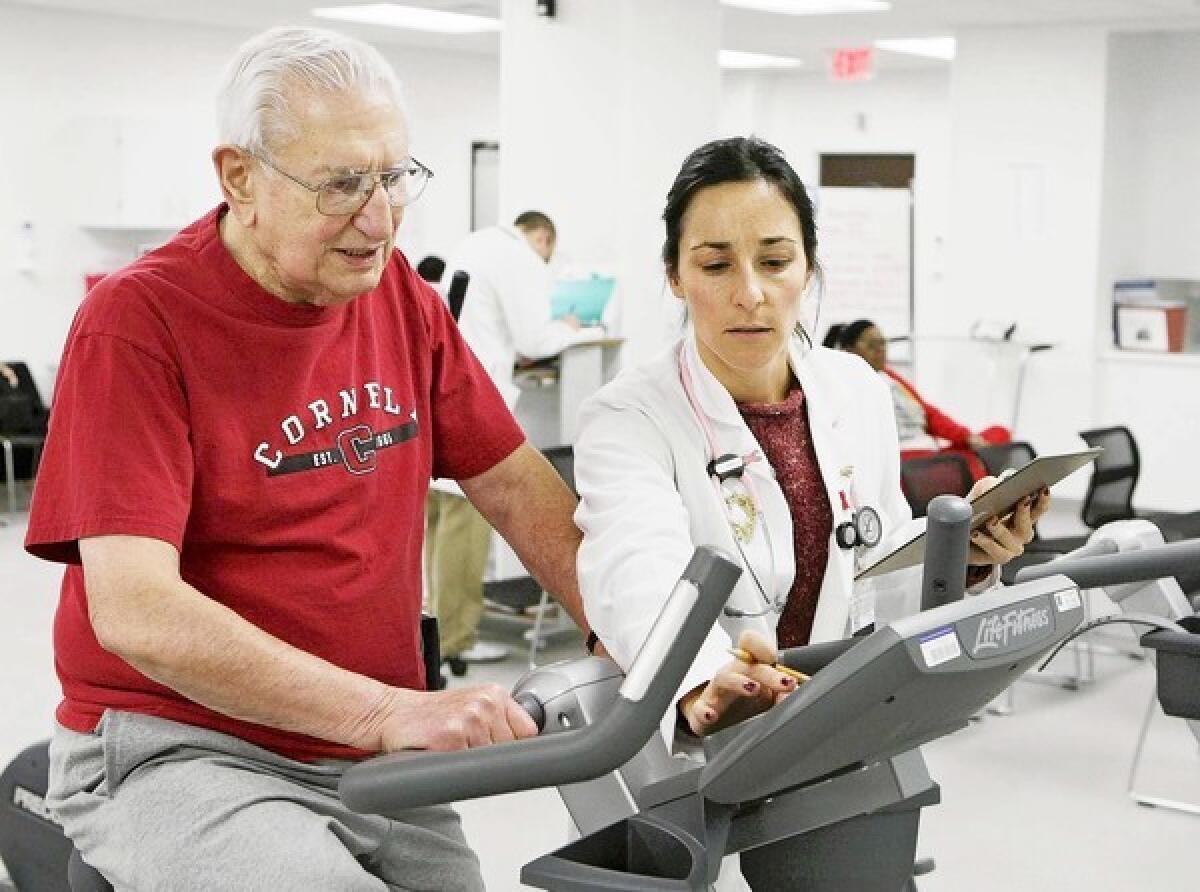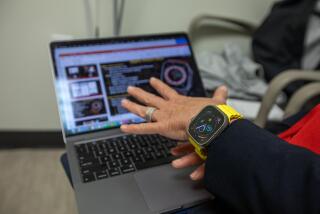Cardiac rehab is underused path to recovery

- Share via
The first week after her heart transplant, Eileen Ryan was a wreck. Overcome by weakness, she couldn’t stand or walk. Going home from the hospital, she had to rely on a wheelchair.
That was in December 2008. By spring, Ryan was steadily regaining strength and getting around on her own with little difficulty.”I began resuming a normal life,” said the 64-year-old, who lives in Jacksonville, Fla. “It was phenomenal.”
Ryan credits cardiac rehabilitation with her recovery. For three months, three times a week, she practiced walking on treadmills and using weights under the watchful eyes of nurses and exercise physiologists at Mayo Clinic’s Jacksonville campus.
Whenever this former high school teacher had a question about her medications or symptoms, someone was on hand to answer it. When she was feeling discouraged, staff offered encouragement as well as helpful advice.”Especially for someone as down as I was — I felt just horrible! — they were very nurturing,” Ryan said.
Several scientific studies confirm the value of cardiac rehabilitation. But in a field defined by high-tech medicine — think of triple bypass operations, stents propping open clogged arteries and defibrillators that deliver electric shocks to the heart — these low-tech services are underused.
Only 12% of eligible seniors participate in programs that help them exercise, eat healthfully, monitor their blood pressure and cholesterol levels, stop smoking, manage their illness and control other factors that contribute to heart disease, according to a June 2009 study in the Journal of the American College of Cardiology.
People eligible for cardiac rehabilitation include those recovering from heart attacks, heart transplants, bypass surgery, heart valve surgery, angina and angioplasty. When they commit to programs, up to one-third fewer patients die over the course of five years, according to the study’s analysis of more than 600,000 Medicare patients.
“Cardiac rehabilitation allows people with heart disease to not only survive but thrive,” said Dr. Barry Franklin, director of cardiac rehabilitation at Beaumont Hospitals in Michigan.
Yet physicians routinely fail to refer heart patients for these services. Almost half of eligible patients don’t get referrals; the problem is even worse for older adults, according to an August 2009 study in the Journal of the American College of Cardiology.
Other factors contributing to low program attendance include difficulty getting to and from program sites; a lack of motivation on the part of patients; depression, which is common after major heart incidents; and resistance to lifestyle changes.
These changes are ultimately what cardiac rehabilitation is about.
“You can’t come into a program for three months and expect that bout of activity will make you more fit and better able to function a year or two years later,” said Mark Williams, editor of the Journal of Cardiopulmonary Rehabilitation and Prevention. “The exercise component of these programs must be maintained long-term.
How much patients invest in cardiac rehabilitation makes a difference. In a December study in the journal Circulation, researchers from Duke University found a relationship between the number of sessions older adults attended and mortality three or four years later. Specifically, older adults who attended 36 sessions, the maximum amount reimbursed by Medicare, had a 22% lower risk of death than those who attended 12 sessions.
Yet only 18% of older adults who began cardiac rehabilitation attended 36 sessions, the study found.
“Every patient comes in with a different readiness for change and a different level of motivation,” said Deborah Kelly, cardiopulmonary rehabilitation nurse supervisor at the Mayo Clinic’s Jacksonville campus.
Many people are afraid and don’t understand what they can and cannot do.
“One of the biggest benefits of our programs is the increase in self-confidence that patients get, knowing how their body is responding,” Kelly said.
At the Mayo Clinic’s Florida campus, each individual referred to cardiac rehabilitation gets a thorough assessment and an individual exercise plan. Each time a patient comes in, his or her blood pressure is tested and the heart rate is monitored with a continuous electrocardiogram. Groups of up to 12 people exercise together for about an hour, split evenly between aerobic and strength-training conditioning. Classes on nutrition and how the heart functions are offered on-site.
The cost of a session varies across the country. At the Mayo Clinic, it’s about $160 for up to 90 minutes of intensive outpatient services. Medicare pays most of the charge for seniors.
After intensive outpatient cardiac rehabilitation is completed, some patients move on to maintenance services, essentially exercise classes with occasional checkups and professional support in a medical setting.
More to Read
Sign up for Essential California
The most important California stories and recommendations in your inbox every morning.
You may occasionally receive promotional content from the Los Angeles Times.











